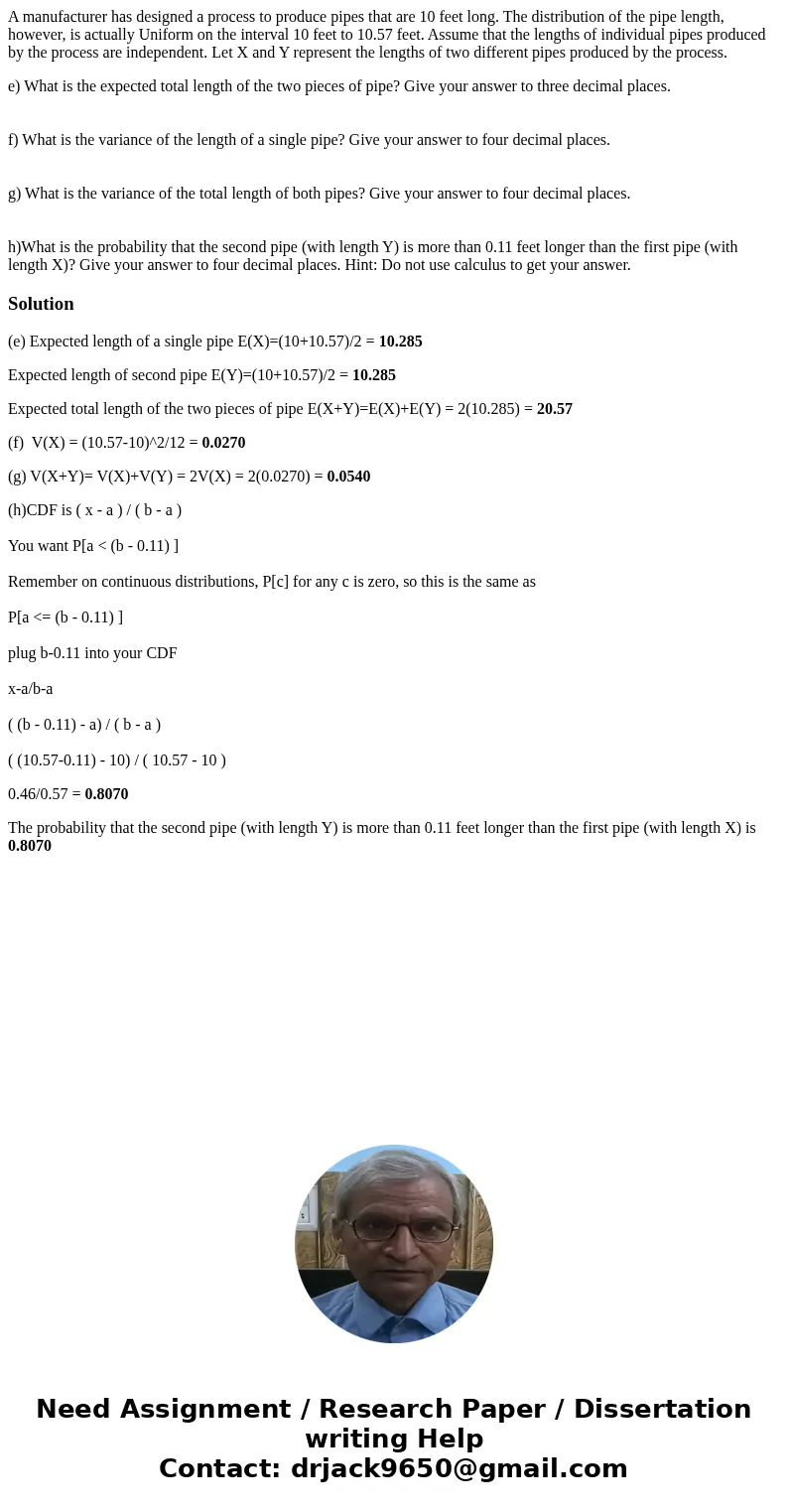A manufacturer has designed a process to produce pipes that
A manufacturer has designed a process to produce pipes that are 10 feet long. The distribution of the pipe length, however, is actually Uniform on the interval 10 feet to 10.57 feet. Assume that the lengths of individual pipes produced by the process are independent. Let X and Y represent the lengths of two different pipes produced by the process.
e) What is the expected total length of the two pieces of pipe? Give your answer to three decimal places.
f) What is the variance of the length of a single pipe? Give your answer to four decimal places.
g) What is the variance of the total length of both pipes? Give your answer to four decimal places.
h)What is the probability that the second pipe (with length Y) is more than 0.11 feet longer than the first pipe (with length X)? Give your answer to four decimal places. Hint: Do not use calculus to get your answer.
Solution
(e) Expected length of a single pipe E(X)=(10+10.57)/2 = 10.285
Expected length of second pipe E(Y)=(10+10.57)/2 = 10.285
Expected total length of the two pieces of pipe E(X+Y)=E(X)+E(Y) = 2(10.285) = 20.57
(f) V(X) = (10.57-10)^2/12 = 0.0270
(g) V(X+Y)= V(X)+V(Y) = 2V(X) = 2(0.0270) = 0.0540
(h)CDF is ( x - a ) / ( b - a )
You want P[a < (b - 0.11) ]
Remember on continuous distributions, P[c] for any c is zero, so this is the same as
P[a <= (b - 0.11) ]
plug b-0.11 into your CDF
x-a/b-a
( (b - 0.11) - a) / ( b - a )
( (10.57-0.11) - 10) / ( 10.57 - 10 )
0.46/0.57 = 0.8070
The probability that the second pipe (with length Y) is more than 0.11 feet longer than the first pipe (with length X) is 0.8070

 Homework Sourse
Homework Sourse